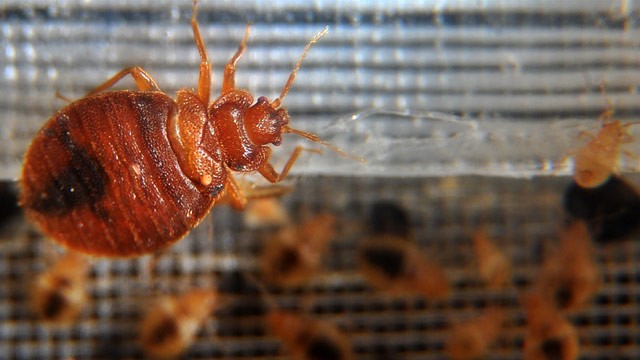
Canadian researchers found methicillin-resistant Staphylococcus aureus (MRSA) and vancomycin-resistant Enterococcus faecium (VRE) on bedbugs collected from three hospitalized patients, according to the report published today in Emerging Infectious Diseases -- the Center for Disease Control and Prevention's journal.
But whether the bugs can actually infect a person remains unclear.
"There is no evidence that bedbugs can infect people with disease," said Philip M. Tierno, director of clinical microbiology and immunology at New York University's Langone Medical Center in New York City.
After plunging fang-like tubes into their unassuming host's skin, bedbugs inject skin-numbing, blood-thinning and anti-inflammatory chemicals that allow them to enjoy their meal uninterrupted. By the time a person notices the swollen bite, the bedbug is long gone. And although bites can get infected, the bacteria were usually there already, Tierno said.
"You scratch the wound, and if you have dirty fingernails, you can inoculate it with bacteria," Tierno said.
But Staphylococcus aureus -- a bacterium with a knack for sniffing out broken skin, setting up shop and spreading like wildfire -- could theoretically make the leap from pest to person, researchers say.
"The claim that bedbugs can spread MRSA is unproven but not a misguided thought," said Dr. Forcht Dagi, an infectious disease specialist at Harvard Medical School in Boston.
For the claim to be true, scientists would have to prove that a person's MRSA infection came from the bedbug and not the patient's skin -- a tricky experiment, given that bedbugs have mastered the seamless getaway.
Pesty Predicament
Bedbugs enjoyed a renaissance after the EPA banned several major pesticides for the risks they posed to human health, and the problem is far from over. The mattress misfits have temporarily shut down parts of the finest hotels -- even hospital wards -- and sent many a good bed to the trash bin. Bedbug pesticide was recently blamed in the death of a California woman who was traveling in Thailand.
And because they're common in urban areas, especially among impoverished communities with high rates of homelessness, the finding that bedbugs carry bacteria is not surprising, some researchers say.
"Since one of three healthy humans carry [Staphylococcus aureus] on their skin and in their nose, and since bedbugs crawl over the skin, I suspect the outer surface of bed bugs pick up [Staphylococcus aureus], [Staphylococcus epidermidis], fecal bacteria including VRE, and a variety of other organisms that are normally present," said Dr. David Gilbert, an infectious disease specialist at Providence Portland Medical Center in Portland, Ore. and past president of the Infectious Diseases Society of America.
But most healthy people have immune systems that can stave off MRSA and VRE infections, according to Dr. John Bartlett, chief of infectious diseases at Johns Hopkins University School of Medicine in Baltimore.
"It is a bad bug in the wrong host, but I doubt bedbugs will be the source of any major infectious disease problems," Bartlett said. "That does not mean that they are not awful pests."



Man made? Kind of reminds me of the tick experiments with Lymes.